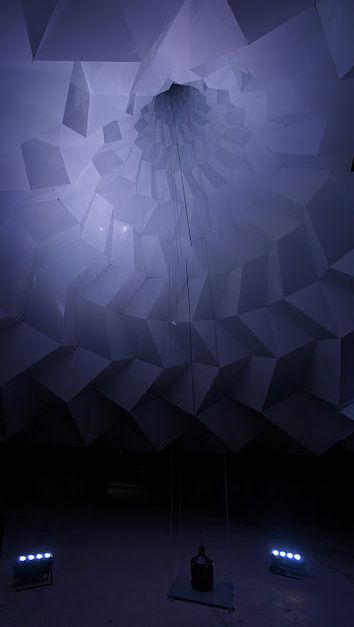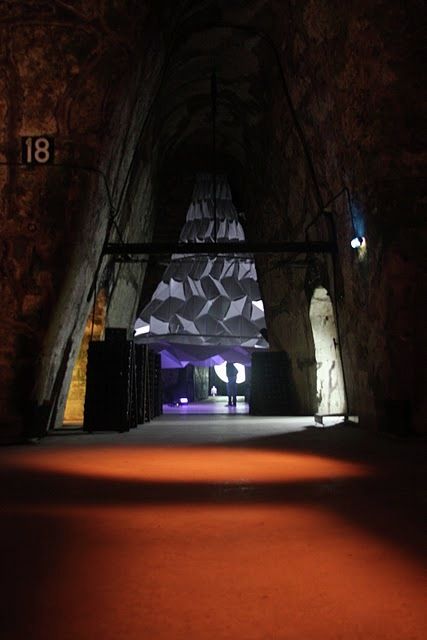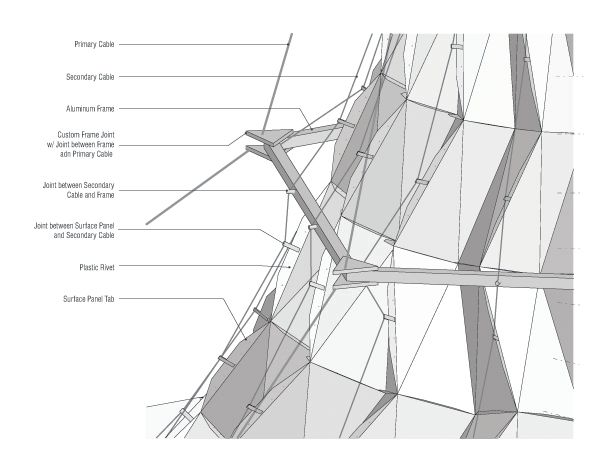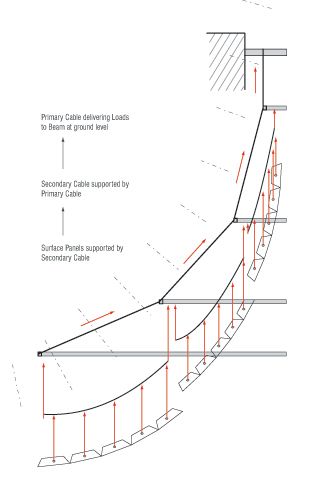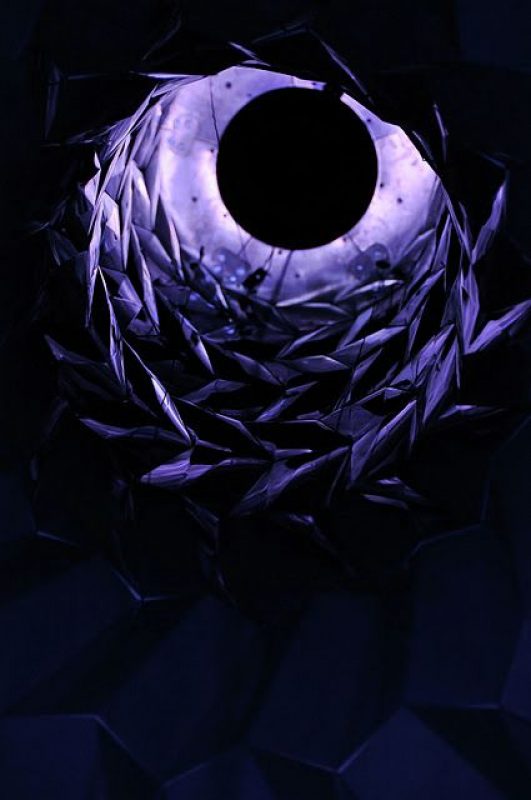One of the largest underground caves of Vranken-Pommery in Reims, France, houses the so-called ‘Fabrique Sonore’ [Sound Factory] installation – a 10x10x12 m suspended structure resembling a pyramid, it is situated within Vranken-Pommery’s largest crayère. This segment is part of the 18 km long underground system dating back to Roman times.
 The historic value and the architectural quality of the place, and also its ‘hidden away’ character seem to be an essential part of the installation as it naturally behaves as a loudspeaker for the structure’s interaction. While the whole of the structure is being suspended, a glass platform situated at the center within the pyramid is also suspended, holding a vessel filled with champagne.
The historic value and the architectural quality of the place, and also its ‘hidden away’ character seem to be an essential part of the installation as it naturally behaves as a loudspeaker for the structure’s interaction. While the whole of the structure is being suspended, a glass platform situated at the center within the pyramid is also suspended, holding a vessel filled with champagne.
The pyramid structure itself also functions as an acoustic amplifier of sounds generated from a single speaker-driver and it amplifies the metaphor of champagne. Here, the act of suspension itself also plays a crucial role: it creates a space beneath the structure – a void where the amplified sounds would invisibly create an enclosed space embracing the listener-viewer towards the center of that space.
 The main idea is that the champagne’s effervescence is captured in its essence by using a special microphone and thus – an audio system can create a continuously immersive sound environment via time analysis and synthesis of the champagne’s bubbles. The sound is therefore diffused in a downward motion thus creating the ‘invisible’ enclosed space beneath the suspension.
The main idea is that the champagne’s effervescence is captured in its essence by using a special microphone and thus – an audio system can create a continuously immersive sound environment via time analysis and synthesis of the champagne’s bubbles. The sound is therefore diffused in a downward motion thus creating the ‘invisible’ enclosed space beneath the suspension.
In addition to the sound acoustics of the designed installation, there is another fragment in the rationale that compliments the idea of continuity of sound. The pyramid structure is a product of digital fabrication combined with traditional ancient paper folding techniques. The 345 cubic meters of structure consists of 285 flat aluminum/polyethylene sheets folded exactly 2, 535 times. The design, fabrication and assembly of the piece takes its inspiration from origami expert and Matematician, Teketoshi Nojima. His work focuses on modeling organic forms by using folding paper techniques.
What aids with the precision and accuracy of the structure’s component composite is the contemporary CAD usage, yet through the use of that, the notion of tradition is preserved and communicated through the medium of sound. The technique of folding is considered as a metaphor for the relationship of mind and matter, how matter is created using mind, and also how folding and unfolding consequently create and annihilate each other.








